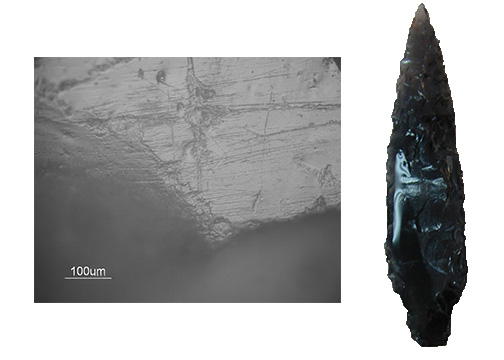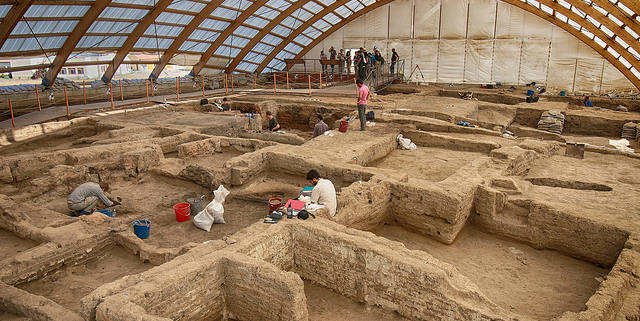Neolithic levels, Turkey
Site excavation director 1993-2018: prof. I.Hodder, Stanford University
Chipped stone tools use-wear analysis
Çatalhöyük is a well-known site located in Central Anatolia that was occupied for 2,000 years; the Neolithic East Mound dates from 7400 BCE to 6000 BCE and the Chalcolithic West Mound covers the first half of the 6th millennium BCE. The Pottery Neolithic village extends over many hectares suggesting a dense population in ancient times. The Neolithic village is especially known for the evidences of rituals and symbolism expressed by burials, wall paintings and mural art. Çatalhöyük is a key site for understanding the social and economic change that characterized the first farming communities of the Near East. A huge team of specialists, directed by J.Hodder, is working from many years to analyze the stratigraphy, the ecofacts and artifacts that form the site.
From 2013 the LTFPA is part of the Çatalhöyük research team with a research project aimed at understanding the social and economic role of chipped stone tools found in the Neolithic village using a use-wear approach. In particular, the project is focused on the study of the activities carried out inside and outside the buildings as a means for clarifying the role of different type of spaces in the social life of the village with a chronological perspective.

The chipped stone tools coming from the internal and external areas pertaining to various buildings from the North and South Areas of East Mound were studied or are under study. Generally, these lithic tools were used for a great variety of activities related to the processing of plants, animal, and mineral materials. Crafts activities related to the production of small stone objects, as beads or similar, are often present both inside and outside the buildings. The study of “special buildings” characterized by elaborated installations, as building 77, showed a lack of activities carried out in its spaces with lithic tools that confirms a different use than the domestic one ascribed toother buildings.
Related bibliography
Archive Reports 2013, 2014, 2015, 2017; http://www.catalhoyuk.com/archive_reports/
Lemorini C, D’Errico D., De Angelis A. Highlighting specialization in prehistoric societies with a use-wear approach Çatalhöyük, Central Anatolia (neolithic phases) and Arslantepe, East Anatolia (EbA phase) in comparison In R.Peake, S.Bauvais, C.Hamon, C.Mordant (eds.) Specialised productions and specialists, Proceedings of the session n° XXXIV-2 of the XVIII° UISPP World Congress, Société préhistorique française, 2020 (Séances de la Société préhistorique française, XXXIV-2), ISSN : 2263-3847 – ISBN : 2-913745-83-0DECEMBER 27, 2020


